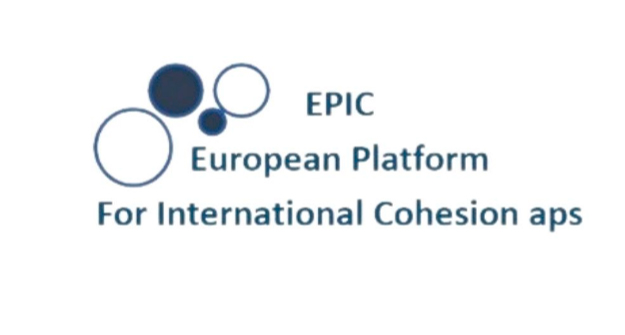|
|
 Project and Management Project and Management
What is a project?Click to read
|
A set of coordinated efforts in time (Kerzner, 1995)
A set of people and other resources temporarly assembled to reach a specific objective, normally with a fixed budget and with a fixed time period. Projects are generally associated with products or procedures that are being done for the first time or with procedures that are being altered (Graham, 1990)
|
 |
A project can be defined as a temporary endeavor undertaken to create a unique product or service (Project Management Institute, A guide to the Project Management Body of Knowledge – PMBOK Guide)
An activity aimed at achieving a unitary objective over a certain period of time using a joint effort of a set of resources.
- Uniqueness
- Constraints
- Planning, execution and control
- Different resources
- Limited duration
Characteristics of projectClick to read
- A project is born thanks an impulse. There is a specific decision-making moment for the start-up.
- Pursues an explicit objective determined by the customer
- It is unique for:
- the results to be achieved;
- The mix of resources, skills to be used;
- The context of reference
- The degree of knowledge of the issue (problem?)
- It is temporary.
- It is outside the scope of what can be achieved with the permanent structure
- High interdependence of different disciplines/knowledge/resources is required
- project implementation requires specific integration of different components of the existing organisational structure.
|
 |
Where are the projects?Click to read
|

|
Key questions:
- What is to be achieved?
- When is it to be realised?
- How much will it cost?
- Who will carry out the realisation of the project?
- What products or services will be produced as a result of the project activity?
- How will project progress be measured?
|
|
Remember!
Rational organisational conditions:
the definition of objectives, professional skills, technical and instrumental resources, time and costs.
Source: Project Management and IT Projects, Guido Nicelli, Fodnazione Politecnico di Milano, Innovazione Digitale
|
 |
So, how do you start?Click to read
- IDENTIFY PROBLEMS/NEEDS
- IDENTIFY OBJECTIVES
- IDENTIFY OPTIONS
- ESTIMATE OPTIONS AND BENEFITS
- REVIEW THE ESTIMATION PROCESS
- SELECT AND APPROVE FINAL OPTION
|
 |
- DEFINE DETAILED OBJECTIVES, CONTENTS AND APPROACHES
- DEVELOP WBS
- ESTABLISH COMMITMENT ON ACTIVITIES
- DEFINE ORGANISATION
- ALLOCATE RESOURCES AND PLAN WORK
- ESTIMATE RISKS
- FORMALISE PROJECT PLAN
|
- CLOSE THE PROJECT
- REVIEW OF PROJECT RESULTS
|
- AGREEING DETAILED PLANS
- AUTHORISE WORK
- COORDINATE WORK
- ASSESSING FINAL ACCOUNTS AND FORECASTS
- ANALYSING PROGRESS
- INITIATE CORRECTIVE ACTION
- OPERATIONAL AND MANAGEMENT REPORTING
- UPDATE WORK PLANS
|
ManagementClick to read
Management refers to the controlling and planning of details (Bauer 1998). By judicious use of available means the actual decisions are made and actions are carried out to achieve the objectives (Storey 1960).
|
Project Management: application of knowledge, skills, techniques and instruments to satisfy project requirements
- Highlight critical situations and provide alternatives timely
- Empowering all stakeholders on specific objectives
- Provide realistic view of the project during its lifecycle
- Draw a future evolution forecasting framework of the project
|
 |
The process of managing a project from start to finish by allocating, utilising and monitoring (limited) resources in order to fulfil (project) requirements within a predefined time frame.
It is therefore necessary to:
The P-O-L-C frameworkClick to read
A manager’s primary challenge is to solve problems creatively. While drawing from a variety of academic disciplines, and to help managers respond to the challenge of creative problem solving, principles of management have long been categorized into the four major functions of planning, organizing, leading, and controlling (the P-O-L-C framework).
Four crucial functions can be used to summarise management ideas. Planning, organising, leading, and controlling are these tasks. The P-O-L-C framework offers helpful direction for the optimal managerial position.
| Planning |
Organizing |
Leading |
Controlling |
|
Vision & Mission
Strategizing
Goals & Objectives
|
Organization Design
Culture
Social Networks
|
Leadership
Decision Making
Communications
Groups/Teams
Motivation
|
Systems/Processes
Strategic Human Resources
|
 a) Planning a) Planning
PlanningClick to read
Planning is the function of management that involves setting objectives and determining a course of action for achieving those objectives. Planning requires that managers be aware of environmental conditions facing their organization and forecast future conditions. It also requires that managers be good decision makers.
It is a procedure with a number of steps. The first step in the process is environmental scanning, which essentially implies that planners need to be aware of the significant risks to their business from the perspective of the economy, their rivals, and their clients. The next step is for planners to try to predict future conditions. Planning is based on these estimates.
Planning is considered a basic function of management. It means that a plan is necessary for any other managerial function, be it organising, directing, staffing, or controlling:
- Planning dictates how to effectively organise a business. It encompasses determining necessary future activities, assigning them to the right personnel, delegating authority, providing tools and raw material, etc.;
- Having a plan of action facilitates directing as it makes instructions, guidance and motivation grounded in a brand strategy;
- Planning inform staffing, as it shows what work-force a company will need.
- Establishment of standards and measurement of actual performance-controlling is done against the expectations that planning sets.
Types of planningClick to read
The first distinction we can make is between:
- Informal planning gives a short-term focus, which might be necessary for the business to operate. In an organisation, various units can have their own informal plans.
- However, if the company wants to grow and reach ambitious goals, the process of planning should be formal, written, specific, and involve common organisational goals.
We also have:
- In order to position the organisation to compete successfully in its environment, strategic planning include analysing competitive possibilities and threats as well as the business's strengths and limitations. The duration of strategic planning is often three years or longer. Generally speaking, the entire organisation participates in strategic planning, which also involves setting goals. It frequently has as its foundation the organization's mission, which is the main reason for its existence. Strategic planning is typically carried out by an organization's senior management.
- Tactical planning is intermediate-range (one to three years) planning that is designed to develop relatively concrete and specific means to implement the strategic plan. Middle-level managers often engage in tactical planning.
- Operational planning generally assumes the existence of organization-wide or subunit goals and objectives and specifies ways to achieve them. Operational planning is short-range (less than a year) planning that is designed to develop specific action steps that support the strategic and tactical plans.
Why some managers fail to planClick to read
Although planning is a basic function of management, in practice, many managers neglect it. You may think that they do not need formal types of planning, as they can use their strategic vision and gut instinct to keep the organisation on track even without it. However, this is not true. Here are the key reasons why managers fail to create a strategic plan:
-
They underestimate the importance of planning
Many managers adopt a get-things-done mentality, failing to pause and consider what they actually need to do. They are unwilling to make any changes since they do not comprehend how planning might impact performance.
-
They lack time for planning
It takes a lot of time to plan, and managers have too many duties. Managers frequently only consider strategic strategies while driving to work or at home as a result. This could lead to a lack of planning. Planning should be specifically scheduled by managers. If a manager finds it difficult to devote enough time to this position, they should assign extra tasks and refrain from micromanaging.
-
They lack meaningful objectives and goals
Sometimes, managers avoid planning because there is no goal that will engage or motivate them to do so. This often happens with companies that operate without any mission statement.
-
They have too much reliance on their experience
Some managers may have achieved success without planning, leading them to believe that planning is pointless. Instead of favourable circumstances, they credit their own abilities with their accomplishment.
-
They lack self-discipline
Setting and achieving objectives, whether they be personal or organisational, needs commitment and self-control. Managers frequently need to build their own talents and abilities in order to plan well.
-
They do not have the necessary knowledge
There are many tools used in planning such as SWOT analysis, PESTLE Analysis, VRIO Framework, environmental scanning, resource analysis, etc. If a manager didn’t get good training in management, he/she may fail to plan effectively and thus see no sense in it. It may also be that they lack experience in certain areas – creating a marketing plan is very different from operational planning.
Effectiveness of planning Click to read
If you understand the importance of planning in management and want to grasp all the benefits of this function, consider the following 5 factors that determine the effectiveness of planning.
| Engagement |
Despite the fact that planning is a managerial task, it shouldn't be carried out by a single individual in a closed room. Instead, a manager's job is to turn planning into a team effort that involves everyone. Make your staff feel involved in the planning process, and they'll be willing to commit to it and participate in the responsibility for seeing it through. They might even have creative suggestions that you would not have thought about.
|
|
Data, not assumptions
|
We all hold assumptions about businesses and markets, but they are not necessarily true. Basing your plan on assumptions is a grave mistake that overrides all the advantages of proper planning. It is important to do market research, host focus groups, talk to one’s own employees, consult market experts – gain any information that will help to base decisions on data rather than assumptions.
|
| Communication |
It is crucial to make the desired outcomes and the strategic strategy obvious to the staff. Encourage everyone to share opinions and make plan adjustments by fostering open communication. Keep in mind that some planning advantages, like creativity, depend on how ready people are to share their ideas and on whether they feel heard and valued for doing so.
|
|
Culture of growth
|
Only in a culture that prioritises efficiency and growth can a true emphasis on improving these metrics be sustained. Work to establish this kind of culture within your company. Employees will be more inclined to commit to ambitious goals and demanding plans if you support their learning and development, value and reward personal accomplishments.
|
|
Commitment to change
|
Effective planning requires letting go of outdated processes, revision of strategies, innovation, hiring and firing. All this means change, which is difficult to manage. Still, to truly benefit from the advantages of planning, a manager should be ready to go beyond the cosmetic changes and face the possible resentment of the team. In this respect, planning in management is a function that requires much courage and commitment.
|
A practical example for a project…Click to read
|
Project Plan
- Project objective
- Activities
- Responsibilities
- Timeframe
- Budget
- Monitoring and performance indicators
- Risks
- Project closure
|
Tools
- WBS and OBS
- Responsibility matrix
- Network Diagram (CPM)
- GANTT chart
- Resource levelling
- Crashing
- Earned Value
- Risk management
|
 b) Organizing b) Organizing
OrganizingClick to read
Organizing is the function of management that involves developing an organizational structure and allocating human resources to ensure the accomplishment of objectives. The structure of the organization is the framework within which effort is coordinated. The structure is usually represented by an organization chart, which provides a graphic representation of the chain of command within an organization. Decisions made about the structure of an organization are generally referred to as organizational design decisions.
Organizing involves both:
- The design of individual jobs within the organization. Decisions must be made about the duties and responsibilities of individual jobs, as well as the manner in which the duties should be carried out. Decisions made about the nature of jobs within the organization are generally called “job design” decisions.
- The design of organization level, deciding how best to departmentalize, or cluster, jobs into departments to coordinate effort effectively.
Recently, many organizations have attempted to strike a balance between the need for worker specialization and the need for workers to have jobs that entail variety and autonomy. Many jobs are now designed based on such principles as empowerment, job enrichment and teamwork.
WBS Work Breakdown Structure Click to read
What is it?
A deliverable-oriented hierarchical decomposition of the work to be executed by the project team to accomplish the project objectives and create the required deliverables, with each level of the WBS representing an increasing detailed definition of the project work. It represents the fundamental structure for correlating and integrating different types of information: times, costs, responsibilities.
What it is used for?
A tool through which it is possible to:
- Fully identify all aspects of the work
- Assign responsibilities
- Generate work plans at the various required scheduling levels
- Generate estimates
- Collect progress data
OBS, Organisational Breakdown Structure Click to read
|
The OBS represents the project organisational structure, the structured allocation of project responsibility levels; it serves to:
- Identify and assign responsibilities;
- Define and communicate the decision-making process;
- Integrate time/cost information according to the defined responsibility structure.
|
 |
A project OBS is a depiction of the project organization arranged to indicate the reporting relationship within the project context. The OBS reflects the way the project is functionally organized.
It is a direct representation and description of the hierarchy and organizations that will provide resources to plan and perform work identified in the WBS. The OBS helps management focus on establishing the most efficient organization, by taking into consideration availability and capability of management and technical staff.
Project Managers are responsible for the creation of an OBS for their assigned projects.
GANTT ChartClick to read
A Gantt chart is a commonly used graphical depiction of a project schedule. It is a type of bar chart showing the start and finish dates of a project’s elements such as resources, planning, and dependencies.
Key takeaways:
- A Gantt chart is a visualization that helps in scheduling, managing, and monitoring specific tasks and resources in a project.
- It consists of a list of tasks and bars depicting each task’s progress.
- The horizontal bars of different lengths represent the project timeline, which can include task sequences, duration, and the start and end dates for each task. A Gantt chart can vary in complexity and depth, but will always have three key components: activities or tasks that are to be done, running along the y-axis; milestones or progress stages indicated along the x-axis (either on the top or bottom of the chart); and progress bars, denoted as horizontal bars, denoting how far along each task is at any given point.
- It is the most widely used chart in project management.
- Gantt charts can be used in managing projects of all sizes and types.
Henry Gantt was a social scientist and management consultant who also held a degree in mechanical engineering. He worked in the field of scientific management, developing methods to streamline and increase the productivity of corporations and their workforce. He created the Gantt chart in the 1910s to help supervisors understand the progress of their labour force and to ensure tasks were on schedule.

Source: https://www.freepik.com/free-vector/gradient-template-gantt-chart_10182353.htm#query=gantt%20chart&position=2&from_view=search&track=sph
Time management Click to read
Time management is the process of planning and controlling how much time to spend on specific activities. Good time management enables an individual to complete more in a shorter period of time, lowers stress, and leads to career success.
Benefits of time management
The ability to manage your time effectively is important. Good time management leads to improved efficiency and productivity, less stress and more success in life. Here are some benefits of managing time effectively:
|
Stress relief
|
More time
|
More opportunities
|
Ability to realize goals
|
|
A task schedule that is created and followed lowers anxiety. You can see that you are actually moving forward as you cross things off your "to-do" list. This relieves the pressure of worrying about whether you are accomplishing your goals.
|
Good time management gives you extra time to spend in your daily life. People who can time-manage effectively enjoy having more time to spend on hobbies or other personal pursuits.
|
A good time management strategy produces more opportunities and less time spent on pointless activities. One of the most important traits that companies look for is effective time management. Any organisation would find it highly advantageous to have the capacity to schedule and prioritise work.
|
Individuals who practice good time management are able to better achieve goals and objectives, and do so in a shorter length of time.
|
List of tips for effective time managementClick to read
After considering the benefits of time management, let’s look at some ways to manage time effectively:
- Set goals correctly
Set goals that are achievable and measurable. Use the SMART method when setting goals. In essence, make sure the goals you set are Specific, Measurable, Attainable, Relevant, and Timely.
- Prioritize wisely
Prioritize tasks based on importance and urgency. For example, look at your daily tasks and determine which are:
- Important and urgent: Do these tasks right away.
- Important but not urgent: Decide when to do these tasks.
- Urgent but not important: Delegate these tasks if possible.
- Not urgent and not important: Set these aside to do later.
- Set a time limit to complete a task
Setting time constraints for completing tasks helps you be more focused and efficient. Making the small extra effort to decide on how much time you need to allot for each task can also help you recognize potential problems before they arise. That way you can make plans for dealing with them.
-
Organize yourself
Utilize your calendar for more long-term time management. Write down the deadlines for projects, or for tasks that are part of completing the overall project. Think about which days might be best to dedicate to specific tasks. For example, you might need to plan a meeting to discuss cash flow on a day when you know the company CFO is available.
-
Remove non-essential tasks/activities
It is important to remove excess activities or tasks. Determine what is significant and what deserves your time. Removing non-essential tasks/activities frees up more of your time to be spent on genuinely important things.
-
Plan ahead
Make sure you start every day with a clear idea of what you need to do – what needs to get done THAT DAY. Consider making it a habit to, at the end of each workday, go ahead and write out your “to-do” list for the next workday. That way you can hit the ground running the next morning.
-
Take a break between tasks
When doing a lot of tasks without a break, it is harder to stay focused and motivated. Allow some downtime between tasks to clear your head and refresh yourself. Consider grabbing a brief nap, going for a short walk, or meditating.
Implications of Poor Time ManagementClick to read
Let’s also consider the consequences of poor time management
| |
 |
You have a loss of control over your life since you are unsure of what the next task is. That could make you feel more stressed out and anxious.
|
|
Poor time management results in wasted time. For example, by talking to friends on social media while doing an assignment, you are distracting yourself and wasting time.
|
Poor time management typically makes the quality of your work suffer. For example, having to rush to complete tasks at the last minute usually compromises quality.
|
|
Poor efficiency results from a lack of planning and goal-setting. But if you don't prepare in advance, you can find yourself needing to go back and forth or backtrack while working. That results in decreased production and efficiency.
|
Client expectations and your employer's opinion of you are negatively impacted if you are unable to deliver jobs on time. Clients are likely to do business with you elsewhere if they can't trust you to complete tasks on schedule.
|
Team workingClick to read
|
“The process of working collaboratively with a group of people in order to achieve a goal.”
|
What is teamwork?
|
It is frequently an essential component of a corporation because it is frequently required that coworkers work well together and give it their all in every situation.
|
|
To actually accomplish their designated task, the team as a whole must work together. No member can afford to take a back seat and wait for the other to act on his or her behalf. To prevent problems, the team members must be dedicated to both the group and the organisation.
|
In spite of any interpersonal tension, it signifies that people will make an effort to work together, utilising their unique strengths and offering constructive criticism.
|
Why is teamwork so important in workplace?Click to read
Teamwork is important in every workplace. In-person, virtual, or hybrid environments mixing remote and in-person all thrive on teamwork. Work collaboratively is the only way to achieve a team’s shared goals.
Teamwork is crucial for many reasons than just increased productivity. You feel appreciated for your contributions and have a better working environment when you are a member of a successful team. You get to work on important projects that matter. Work that has significance increases your commitment and well-being in addition to making you feel valued.
Ten benefits of teamwork:
- Better problem solving
- Increased potential for innovation
- Happier team members
- Enhanced personal growth
- Less burnout
- More opportunities for growth
- Boosted productivity
- Smarter risk taking
- Fewer mistakes
- Expanded creativity
The link between teamwork and relationshipClick to read
Great teamwork requires great relationships, which in turn require:
- Trust which allows people to be open and honest with each other. Establishing trust means do not have to spend time wondering if folks are knifing you in the back. It means being prepared to admit making a mistake, being uncertain, and saying sorry for treating a colleague badly.
- Mutual respect where people can have different opinions without being criticised or ridiculed for doing so.
- Awareness of self and others: this means having emotional intelligence, taking responsibility for your words and actions, and having empathy with those around you.
- Diversity not just accepting diverse views and opinions, but actually welcoming them for what they add to the team.
- Open and honest communication which is, of course, a pre-requisite for any good relationship regardless of the selected communication medium and which allows high-quality sharing of information.
- Listening: making an effort to truly understand another’s view of the world.
- Managing conflict which means focusing on the issue, not the personalities involved in a difference of opinion.
Team building Click to read
Team building is a management technique used for improving the efficiency and performance of the workgroups through various activities. It involves a lot of skills, analysis and observation for forming a strong and capable team. The whole sole motive here is to achieve the organization vision and objectives.
The manager responsible for team building must be able to find out the strengths and weaknesses of the team members and create the right mix of people with different skill sets. He must focus on developing strong interpersonal relations and trust among the team members.
The manager must encourage communication and interaction among the team members and also reduce stress with the help of various team-building activities.
Team building is not a one-time act. It is a step by step process which aims at bringing a desirable change in the organization. Teams are usually formed for a particular task or project and are mostly for the short term.
The various steps involved in team building are as followsClick to read
- Identify the need for team building: the manager has first to analyse the requirement of a team for completing a particular task. It should find out the purpose of the work to be performed, required skills for the job and its complexity before forming a team;
- Define objectives and required set of skills: next comes the chalking down of the organizational objectives and the skills needed to fulfil it
- Consider team roles: the manager considers the various aspects, i.e. the interactions among the individuals, their roles and responsibilities, strengths and weaknesses, composition and suitability of the possible team members.
- Determinate a team building strategy: now the manager has to understand the operational framework well to ensure an effective team building. He/She must himself/herself be assured of the objectives, roles, responsibilities, duration, availability of resources, training, the flow of information, feedback and building trust in the team.
- Develop a team of individuals: at this stage, the individuals are collected to form a team together. Each member is made familiar with his roles and responsibilities within the team.
- Establish and communicate the rules: the rules regarding the reporting of team members, meeting schedules, and decision making within the team are discussed. The individuals are encouraged to ask questions and give their views to develop open and healthy communication in the team.
- Identify individual’s strengths: various team-building exercise are conducted to bring out the strengths of the individuals. It also helps in familiarizing the team members with each other’s strengths and weakness.
- Be a part of the team: at this point, the manager need to get involved with the team as a member and not as a boss. Making the individuals realize their importance in the team and treating each member equally is necessary. The team members should see their manager as their team leader, mentor and role model.
- Monitor performance: next step is checking the productivity and performance of the team as a whole. It involves finding out loopholes and the reason for it. This step is necessary to improve the team’s performance and productivity in the long run.
- Schedule meetings: one of the most crucial steps is to hold purposeful meetings from time to time to discuss team performance, task-related problems and discuss the future course of action.
- Dissolve the team: lastly, the manager needs to evaluate the results and reward the individuals on their contribution and achievement. Finally, the team is dispersed on the fulfilment of the objective for which it was formed.
 c) Leading c) Leading
LeadingClick to read
|
One of the primary responsibilities of a manager is to ensure the completion of all tasks on time and strict adherence to policies. And for this leadership skills are important. Leadership skill involves:
- Creating and sharing a vision of possible achievements by the organization
- Communicating with employees and creating good interpersonal relations
- Motivating and inspiring team members to perform better.
|
 |
Leading also ensures that the managers create a positive environment at work. This also helps improve the performance of each employee or group of people, boosts their morale and leads to a productive and innovative team.
The informal and social networks you use to motivate people to take action are examples of leadership. If managers are good leaders, their staff members will be eager to work hard to meet organisational goals.
The behavioural sciences have greatly advanced our knowledge of this managerial function. Studies on job attitudes and personality traits might help managers better understand how to manage their employees. For instance, this research reveals that managers must first comprehend the personalities, values, attitudes, and emotions of their subordinates in order to become effective leaders.
 d) Controlling d) Controlling
ControllingClick to read
Controlling involves ensuring that performance does not deviate from standards. Controlling consists of three steps, which include:
- Monitoring ongoing activities
- Establishing standards of performance/output;
- Comparing actual performance against standards;
- Identifying area that need improvement (can be processes, policies or practices);
- Taking corrective action when necessary.
Two traditional control techniques are:
- budget: A budget audit provides information about where the organization is with respect to what was planned or budgeted for, whereas a performance audit might try to determine whether the figures reported are a reflection of actual performance.
- performance audits: an audit involves an examination and verification of records and supporting documents.
 Summing up Summing up
Summing upClick to read
|
Time management
Time management is the process of planning and controlling how much time to spend on specific activities. Good time management enables an individual to complete more in a shorter period of time, lowers stress, and leads to career success.
|
 |
Management
Management is the coordination and administration of tasks to achieve a goal. Such administration activities include setting the organization's strategy and coordinating the efforts of staff to accomplish these objectives through the application of available resources..
|
|
Team working
It means that people will try to cooperate, using their individual skills and providing constructive feedback, despite any personal conflict between individuals
|
Team building
Team building is a management technique used for improving the efficiency and performance of the workgroups through various activities. It involves a lot of skills, analysis and observation for forming a strong and capable team. The whole sole motive here is to achieve the organization vision and objectives.
|
|
Quests! Learn more. |
|
Tag Team Game Time
The Prisoner’s Dilemma
|



 Project and Management
Project and Management








